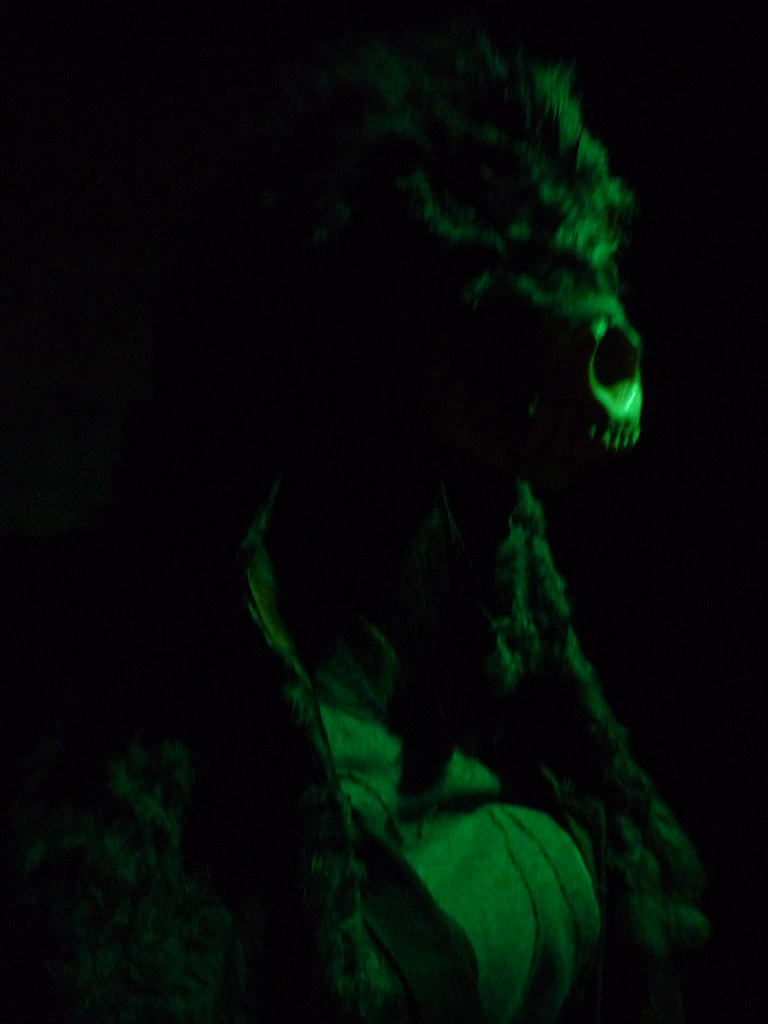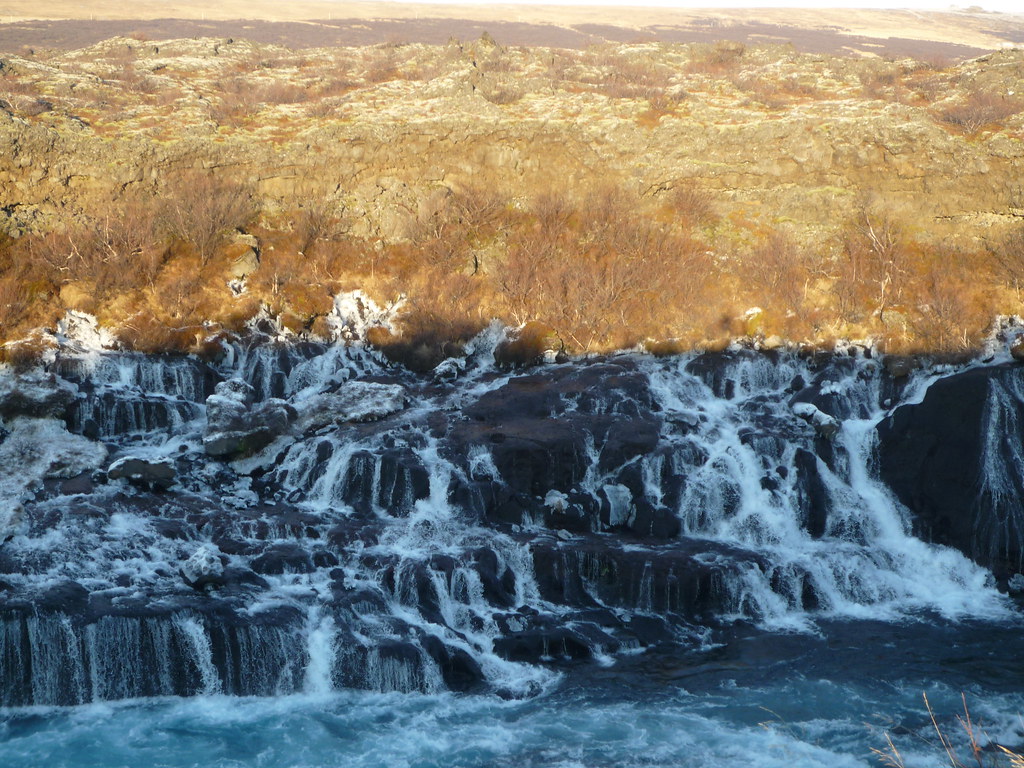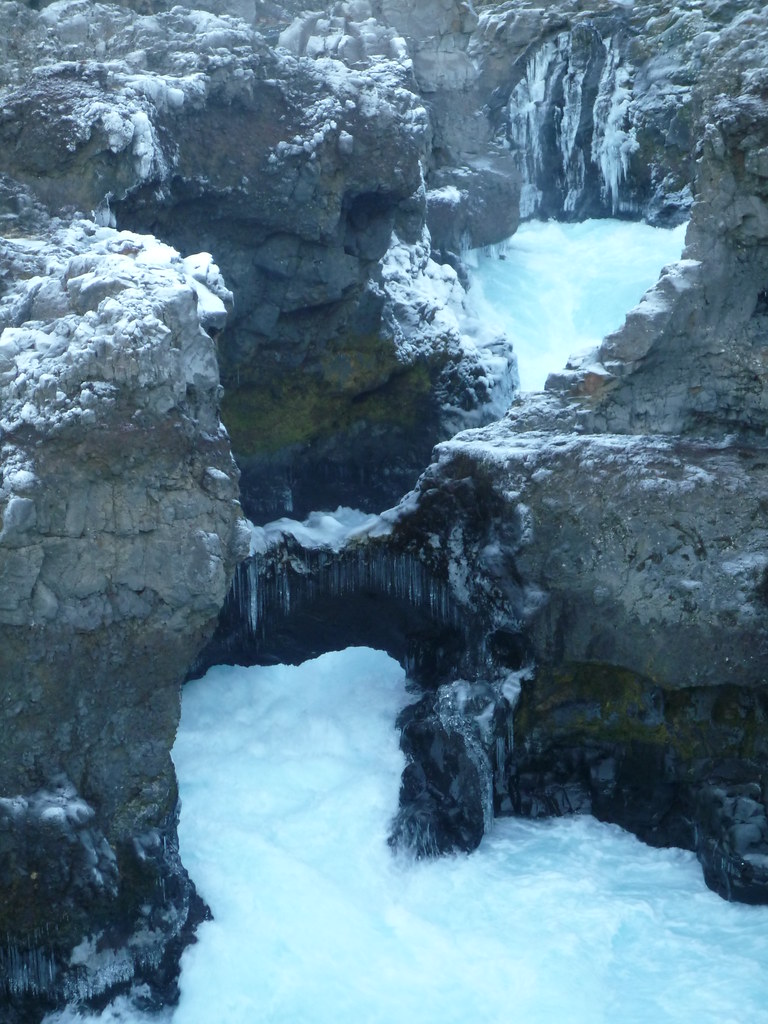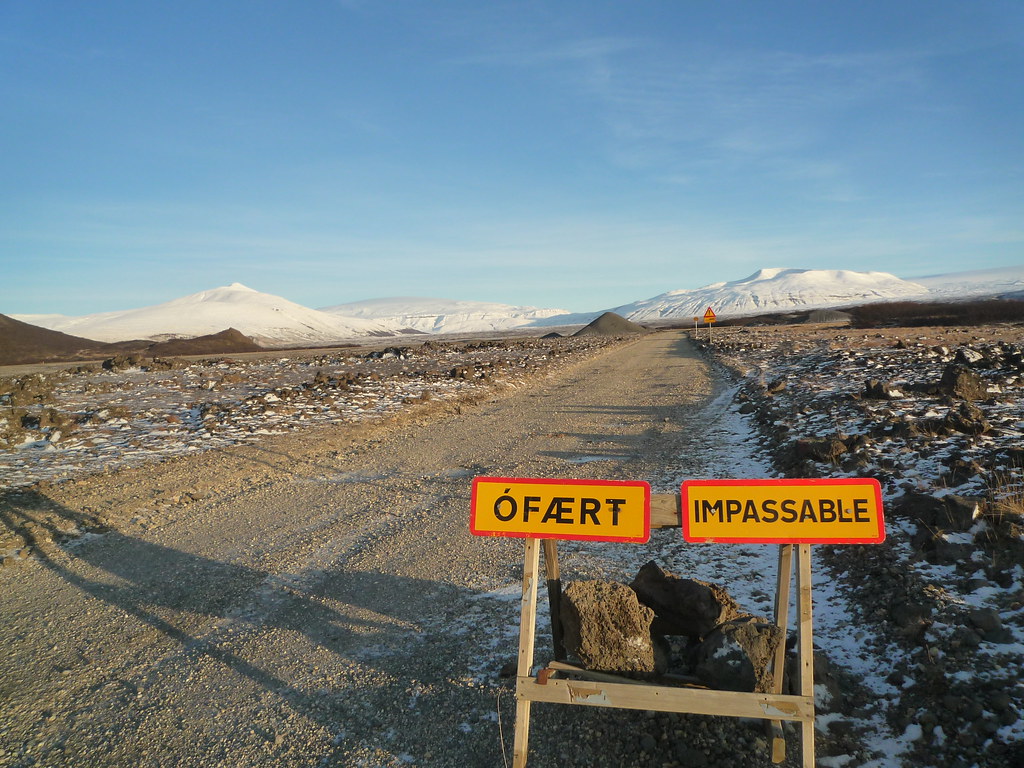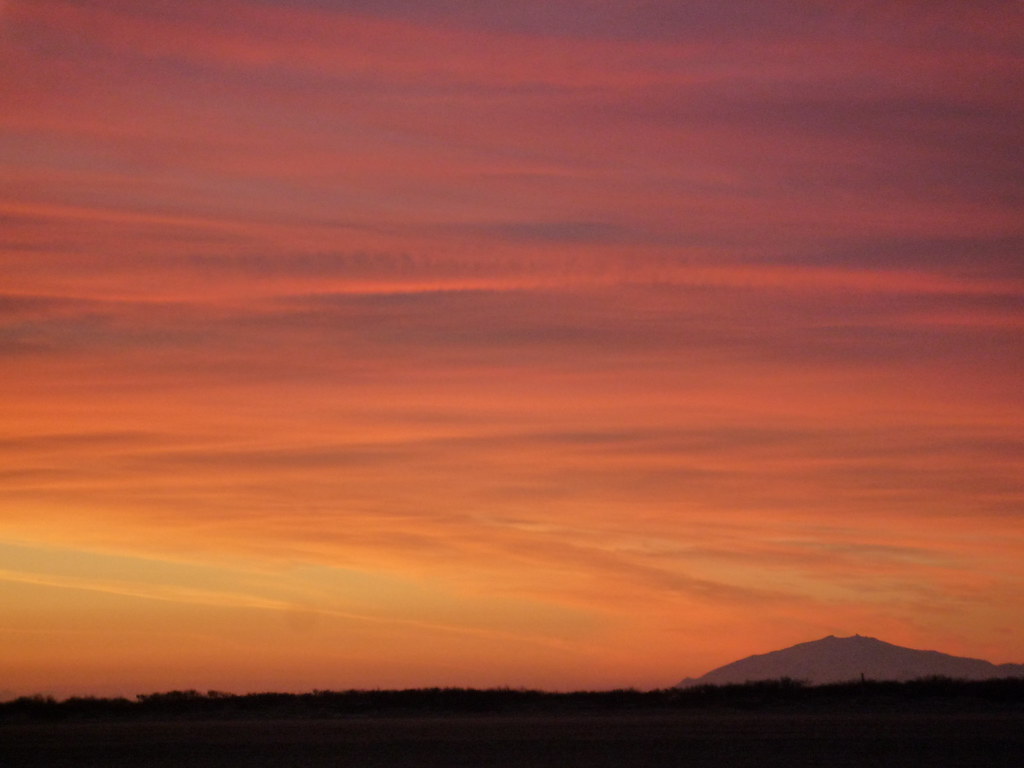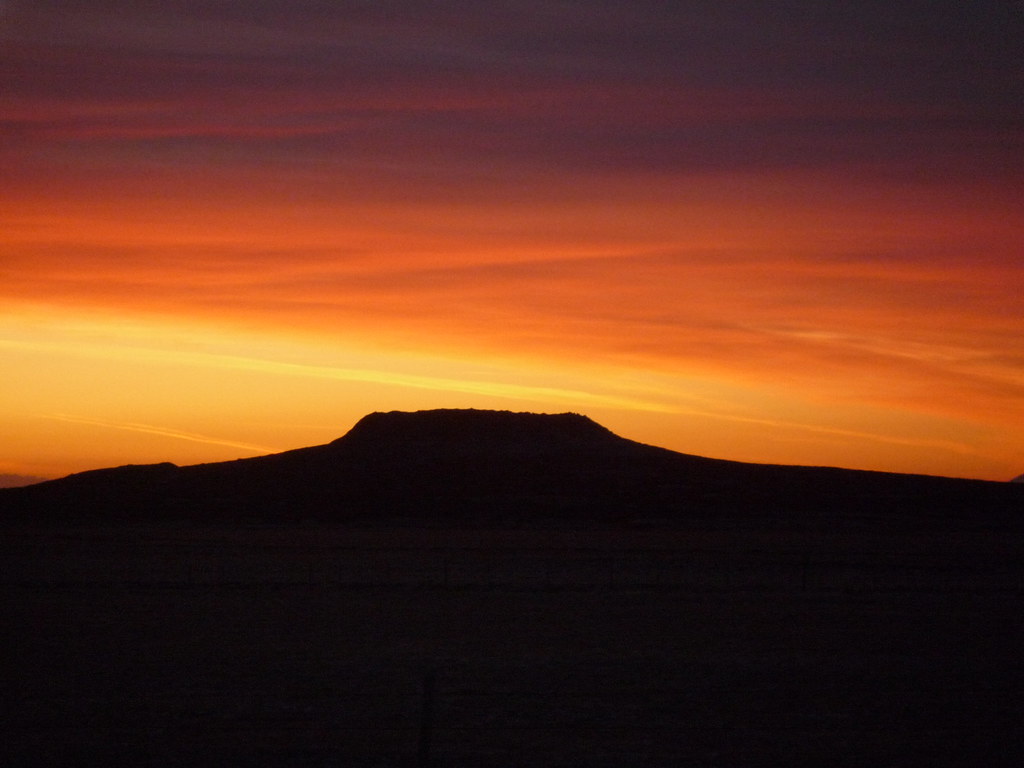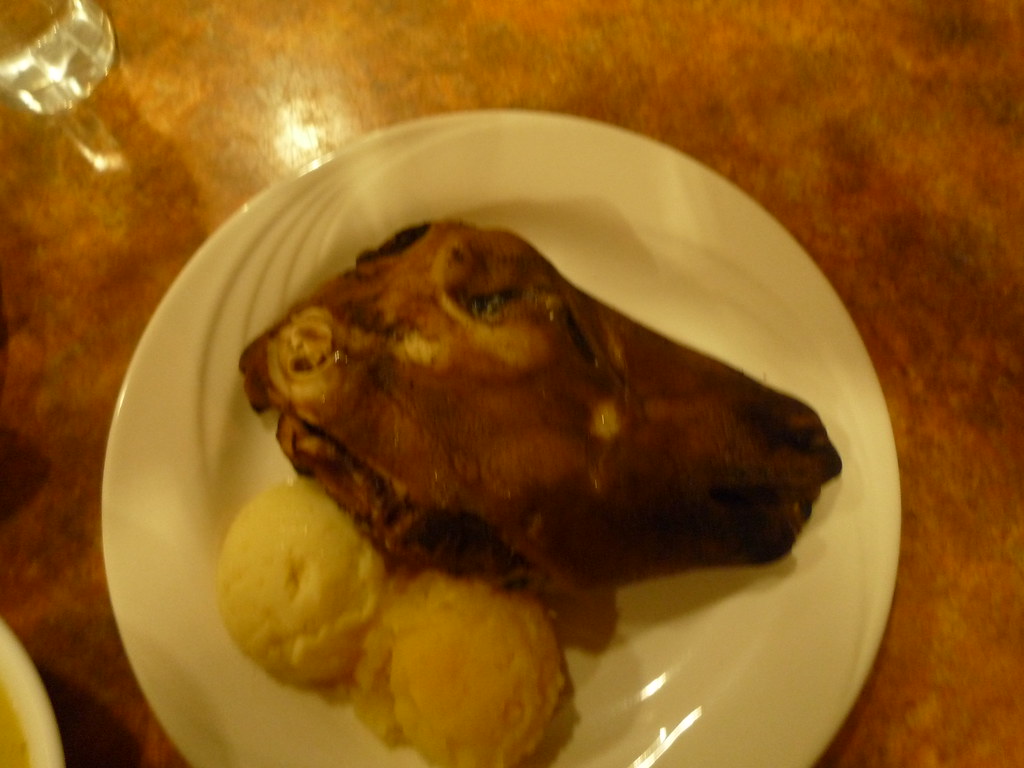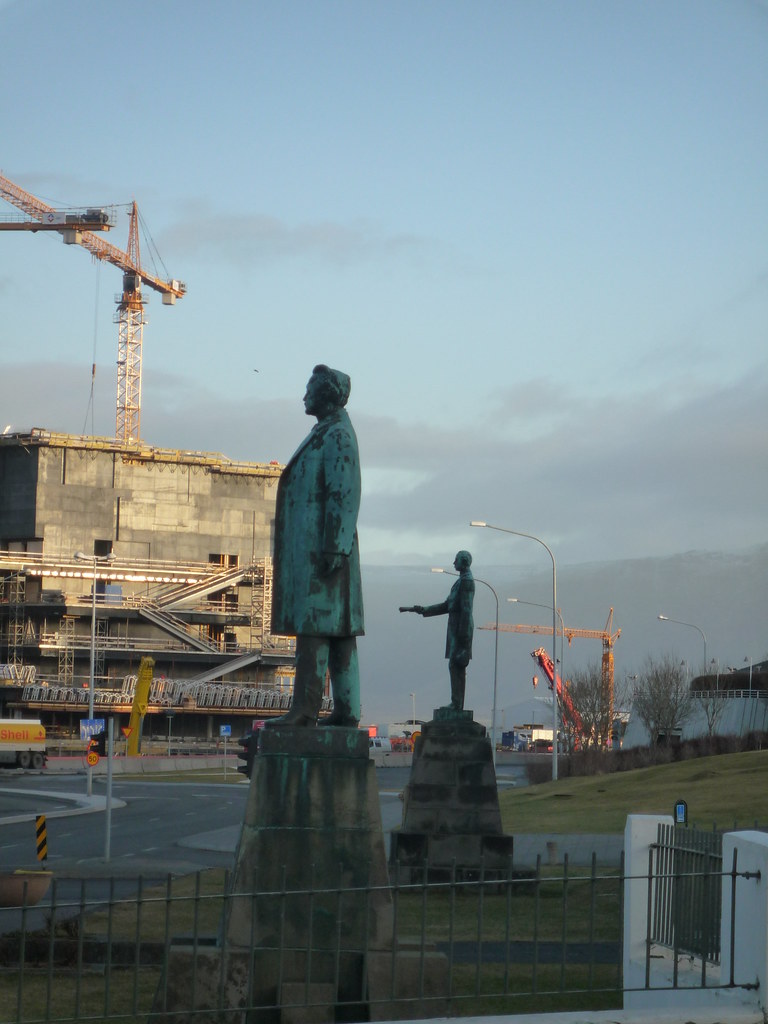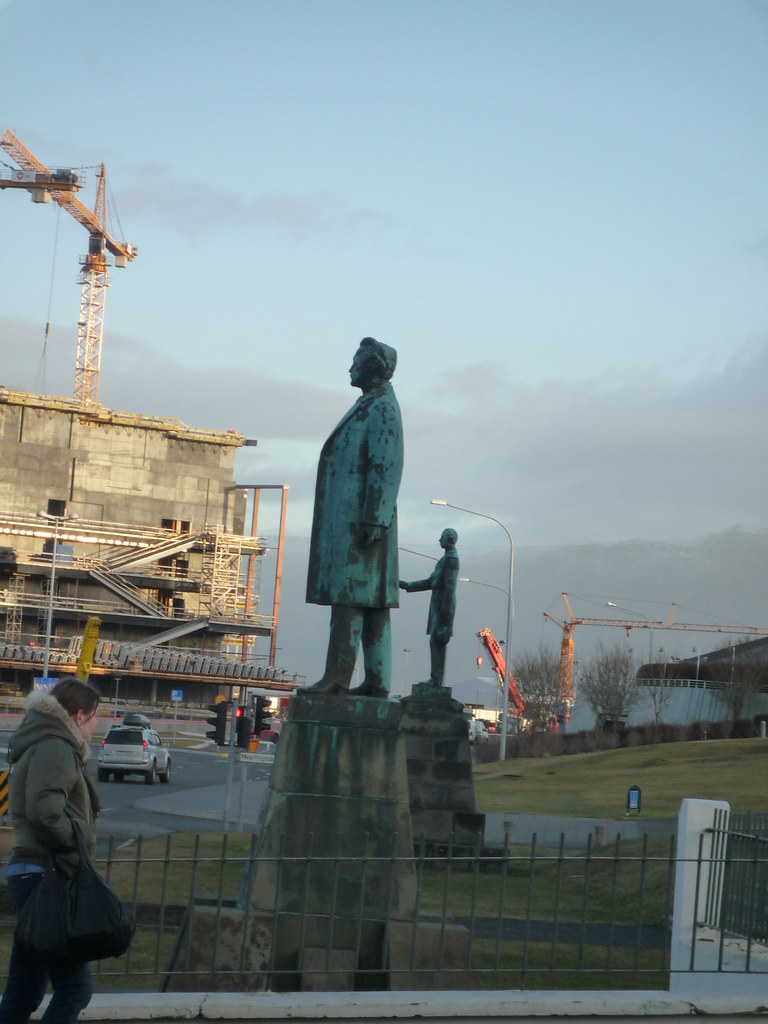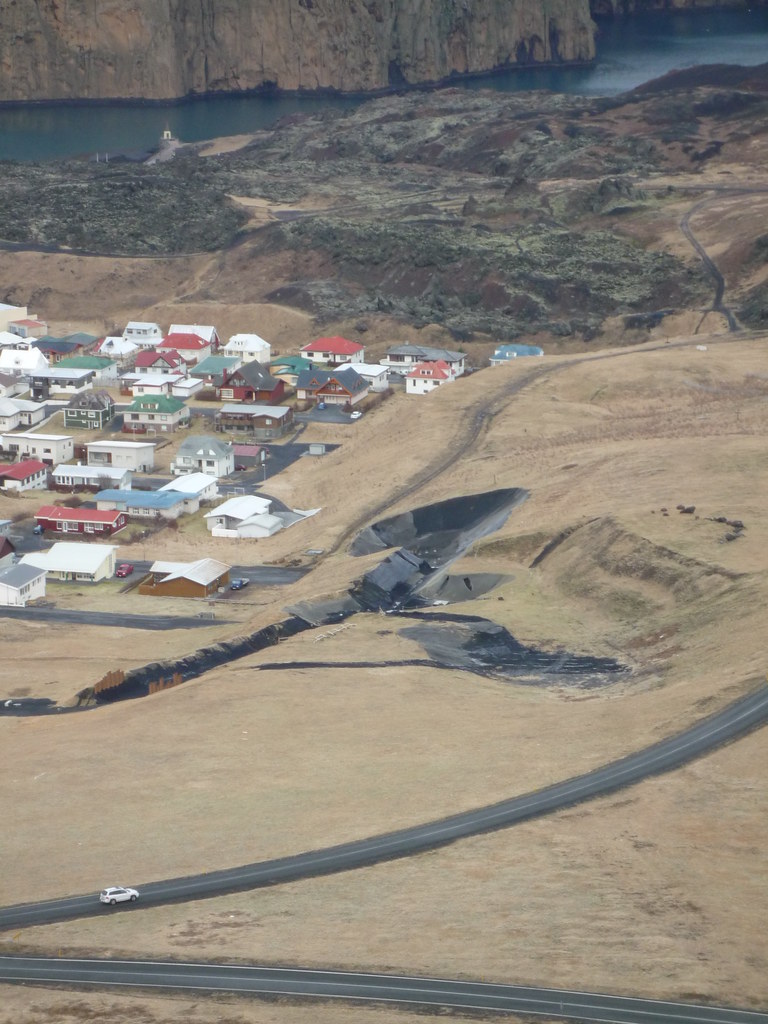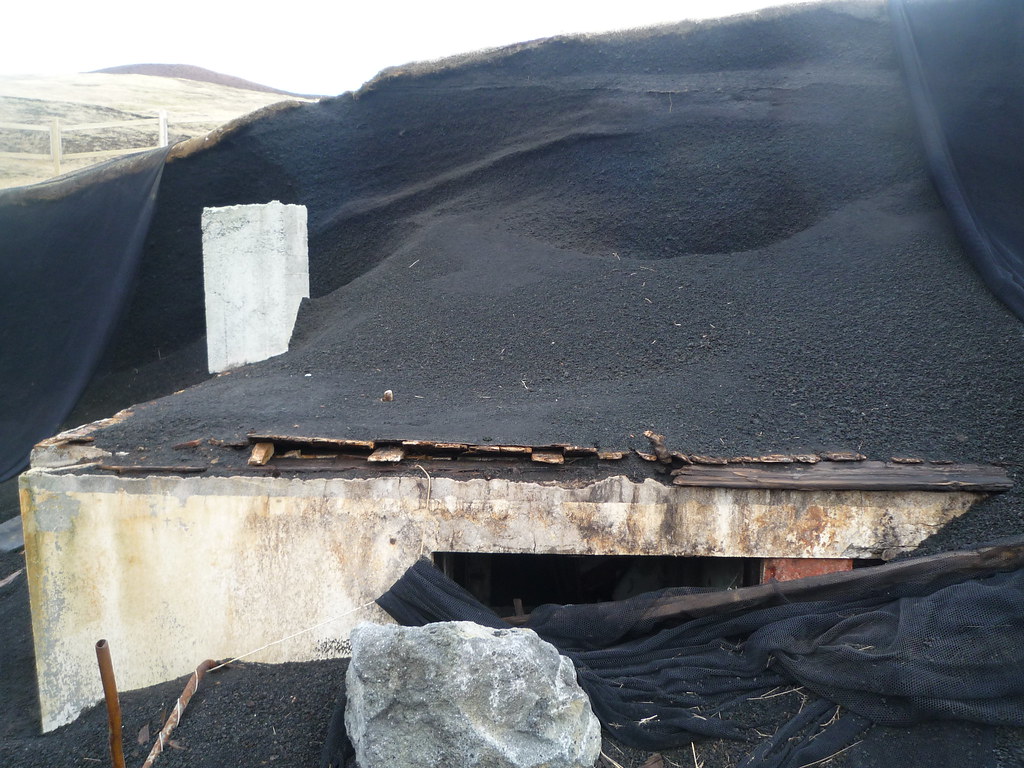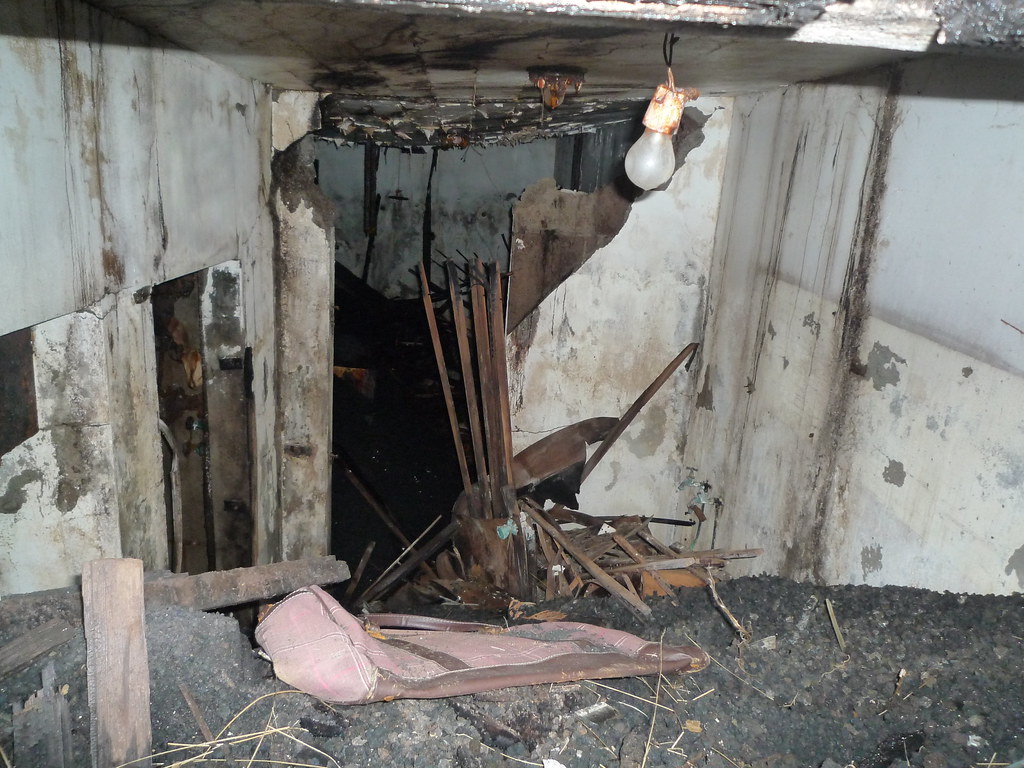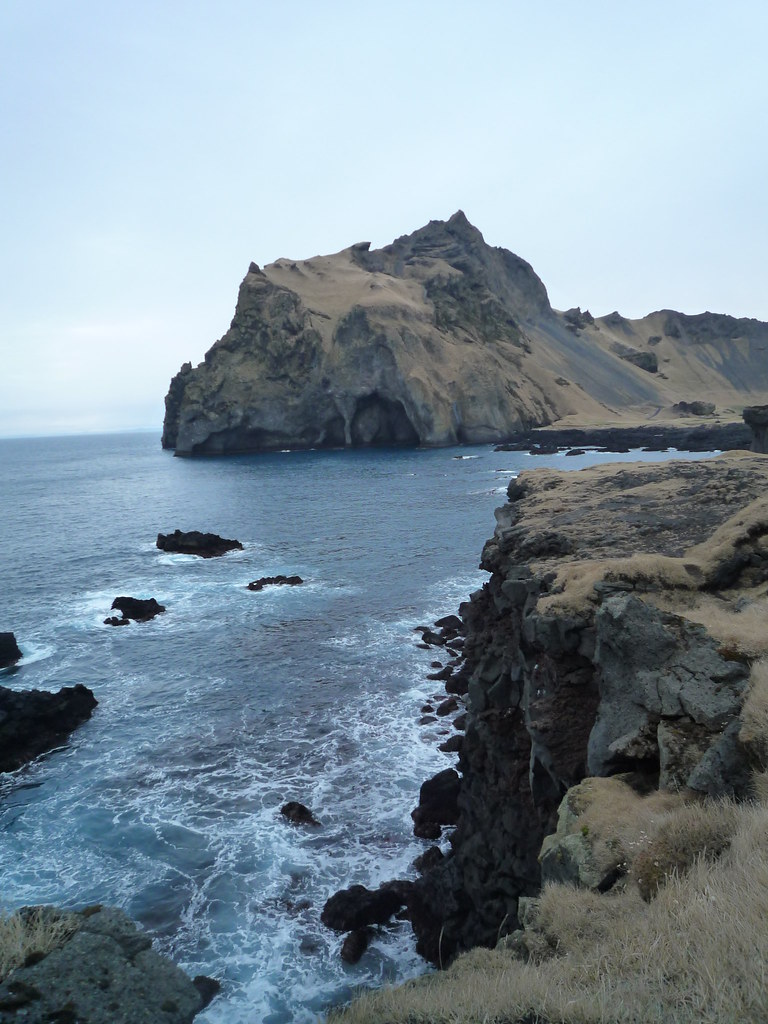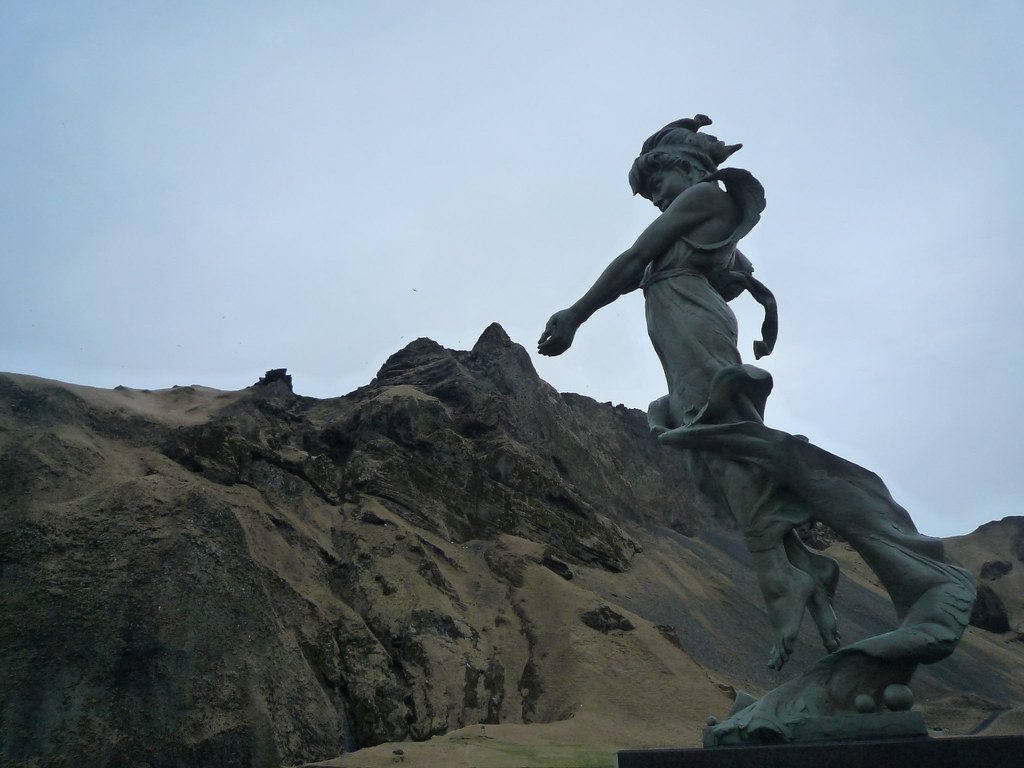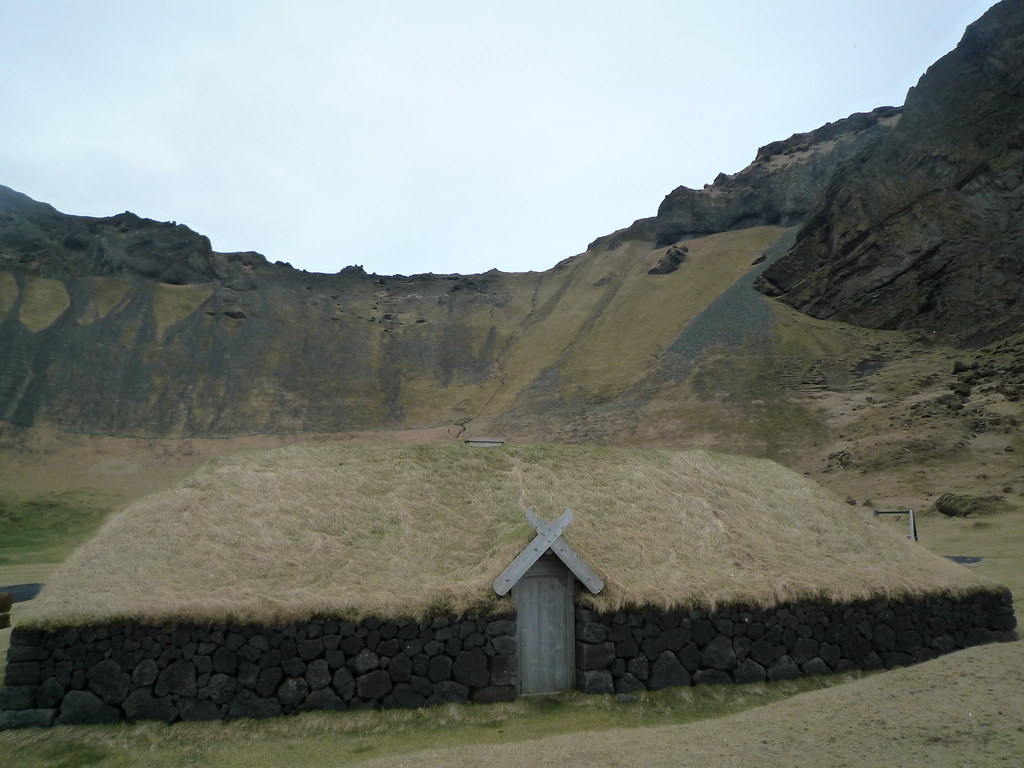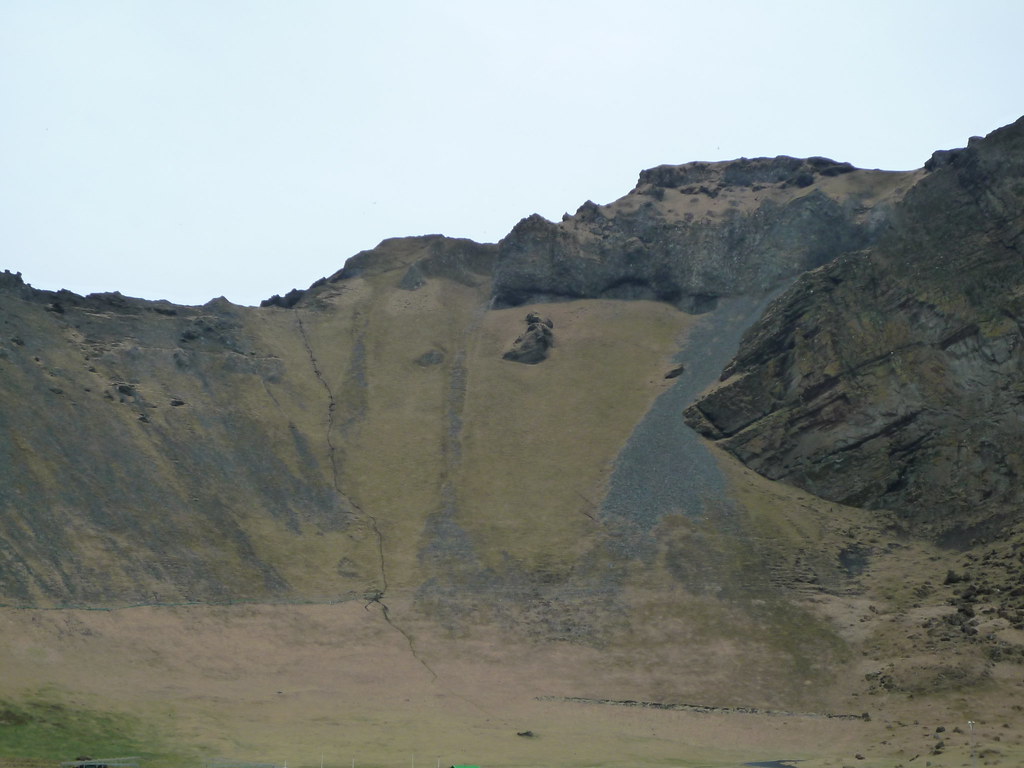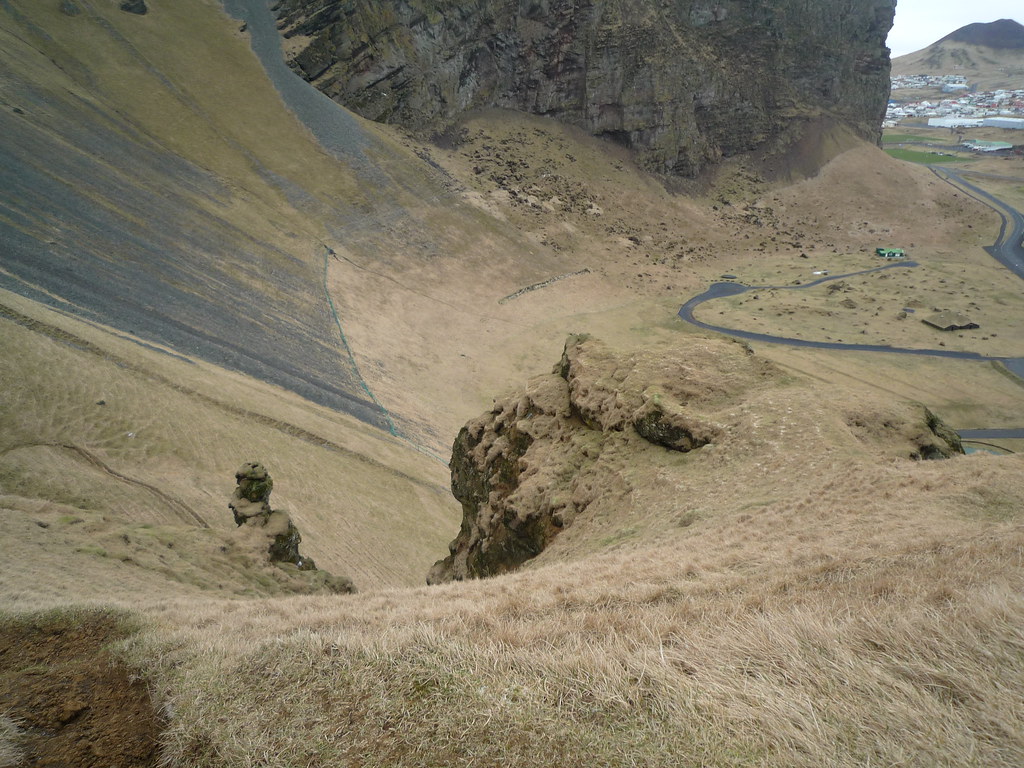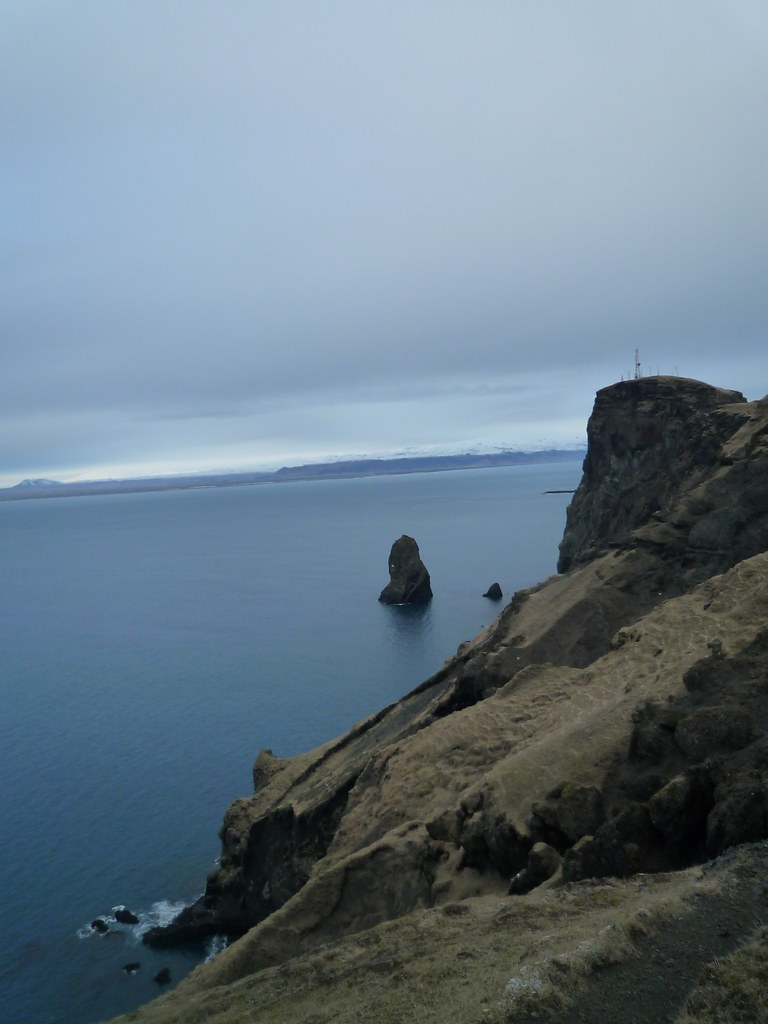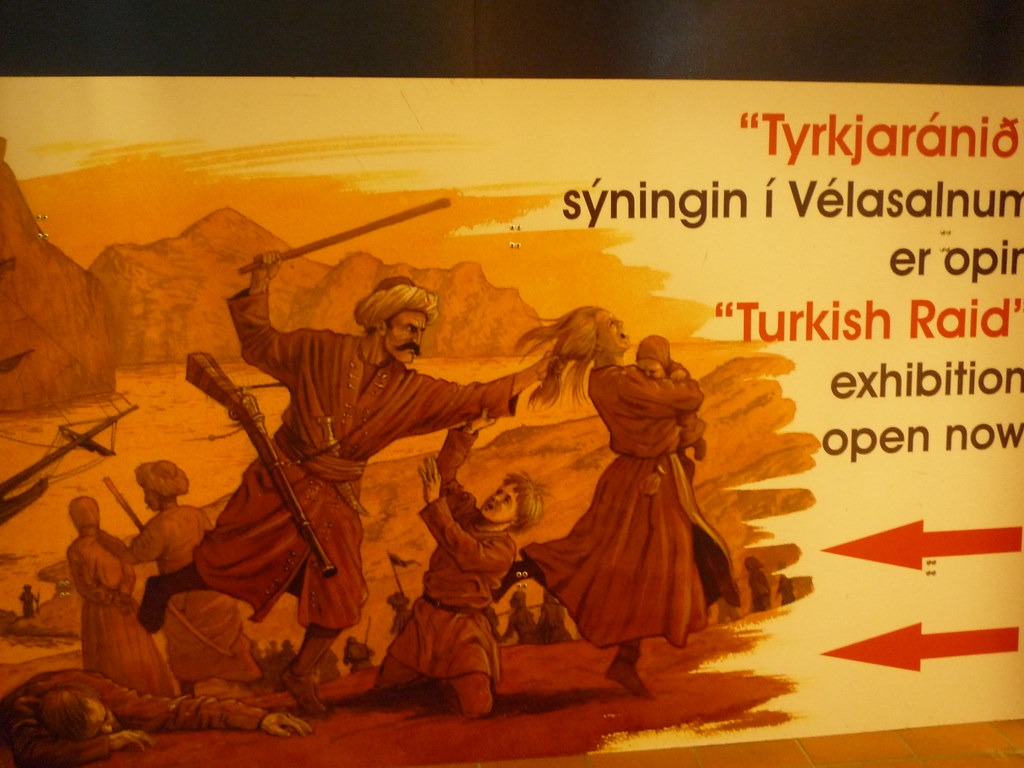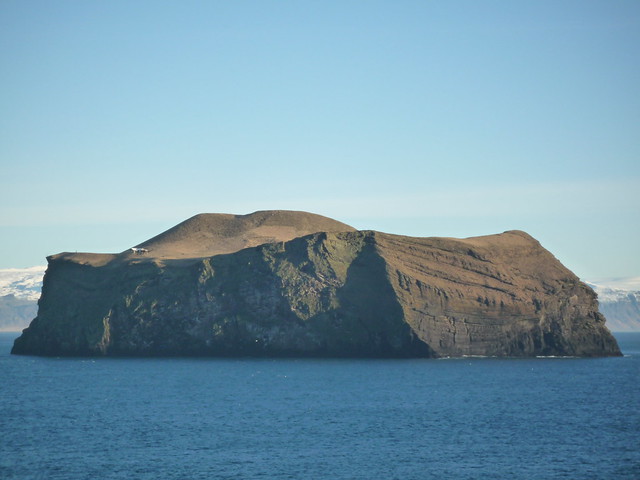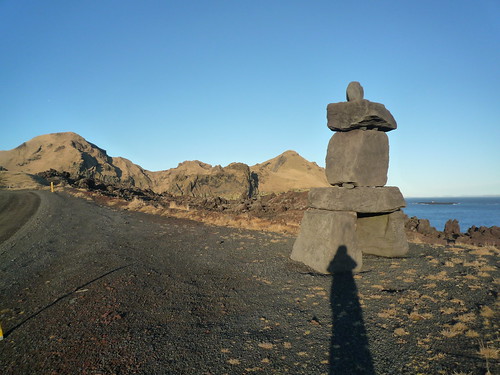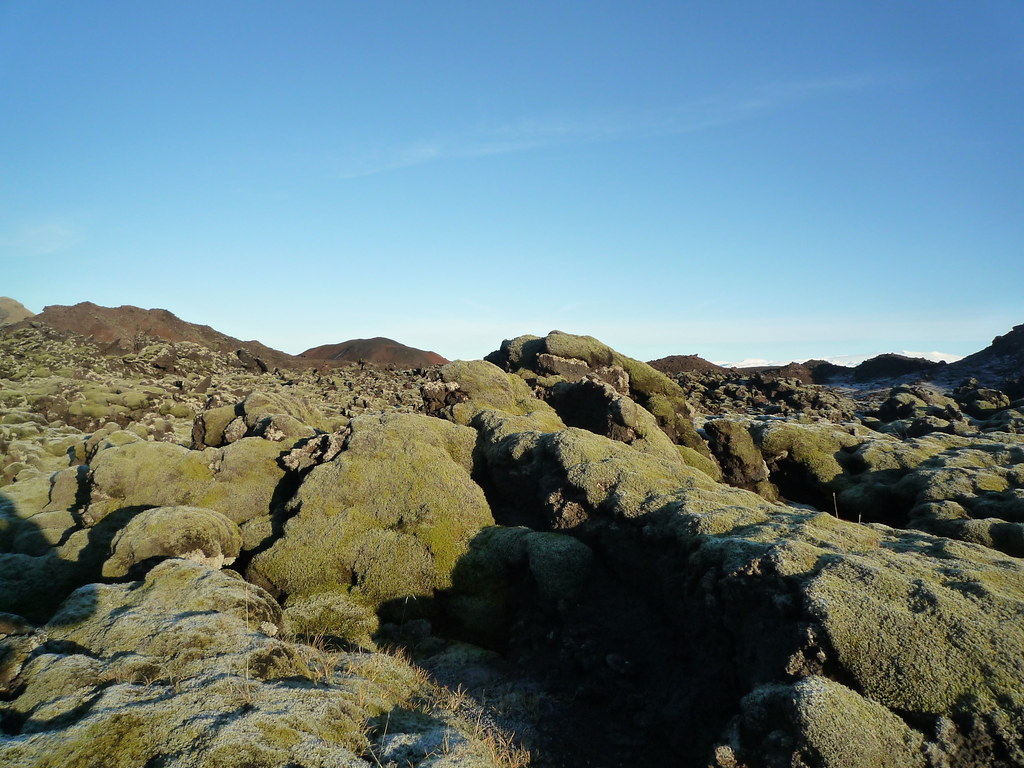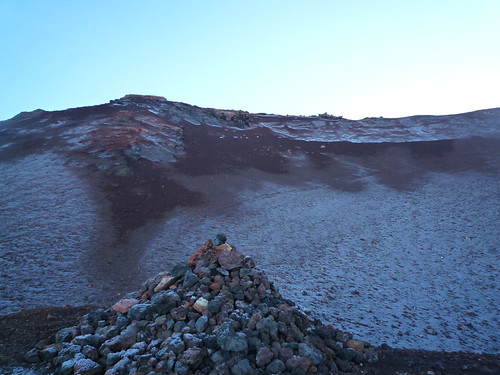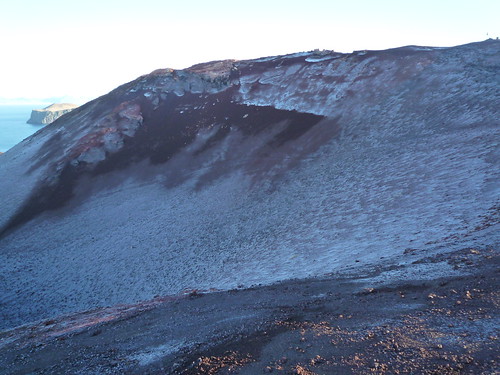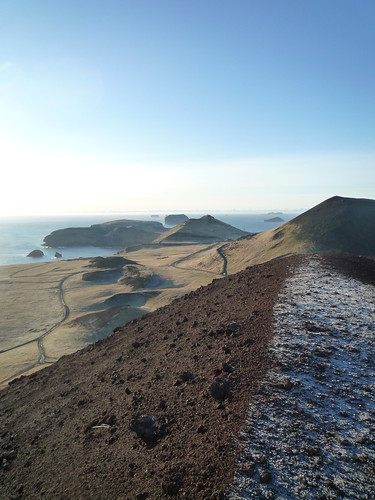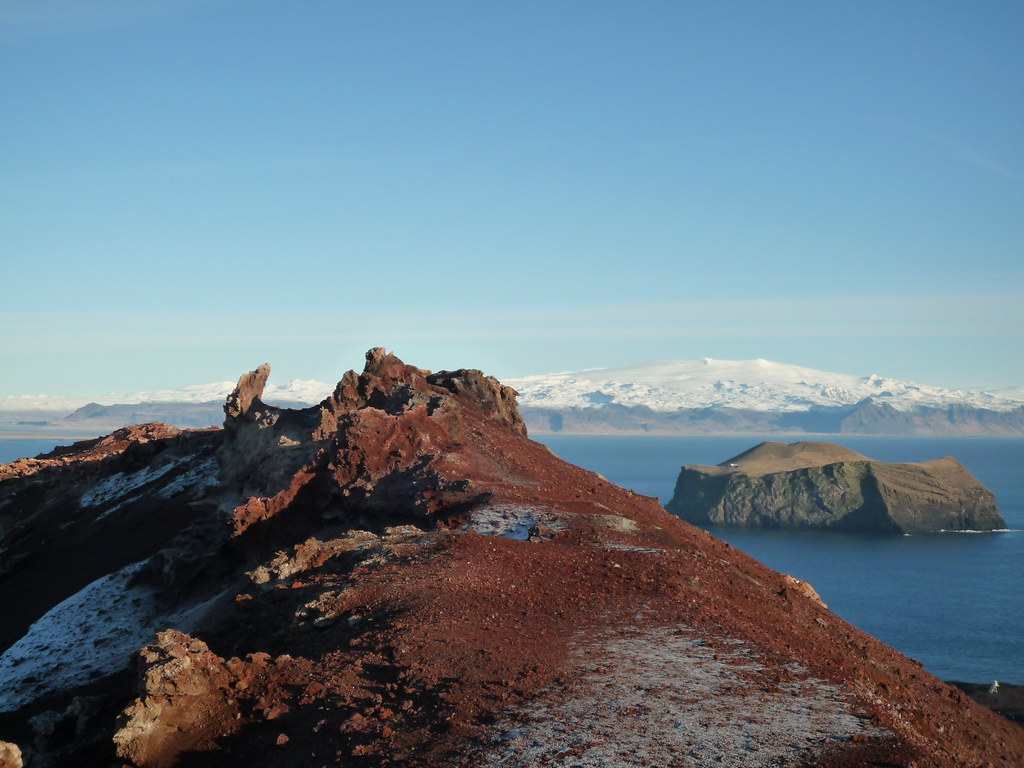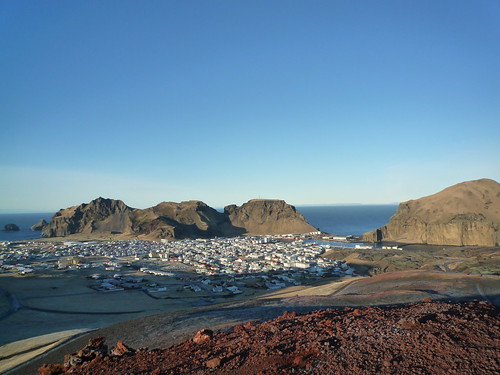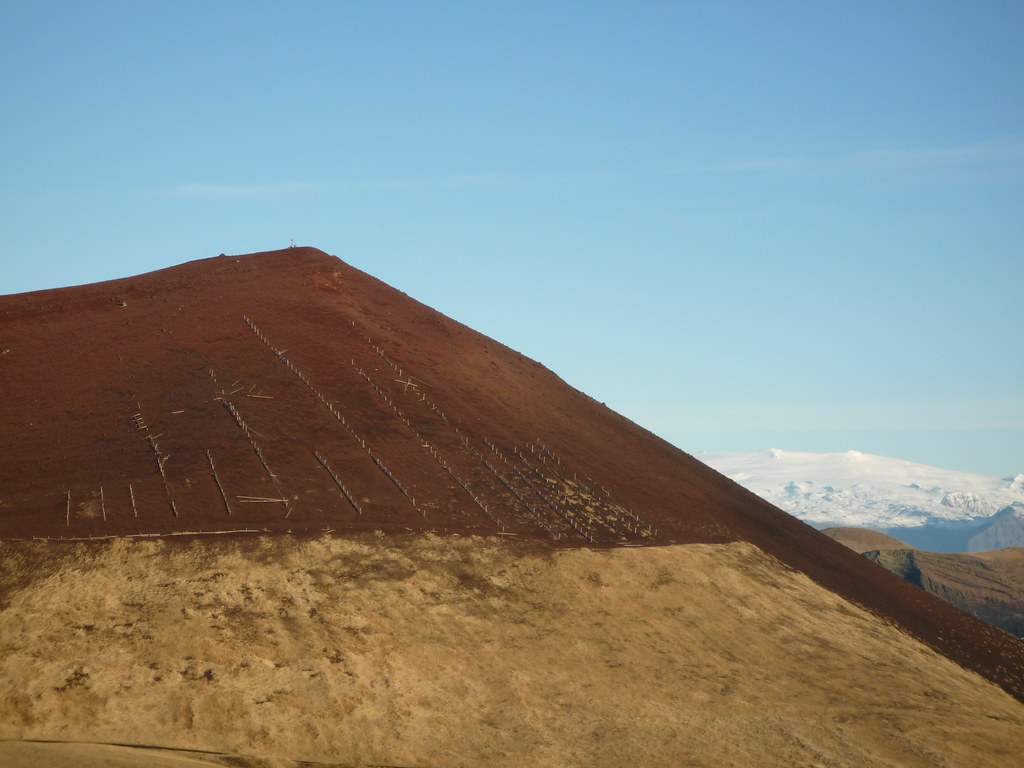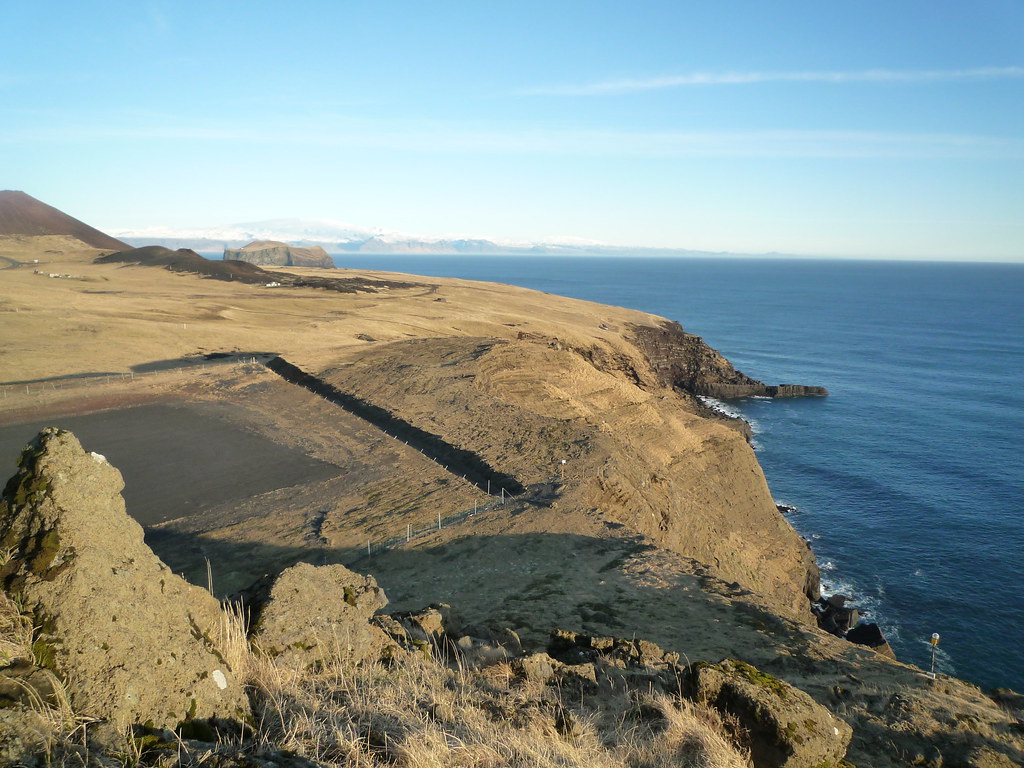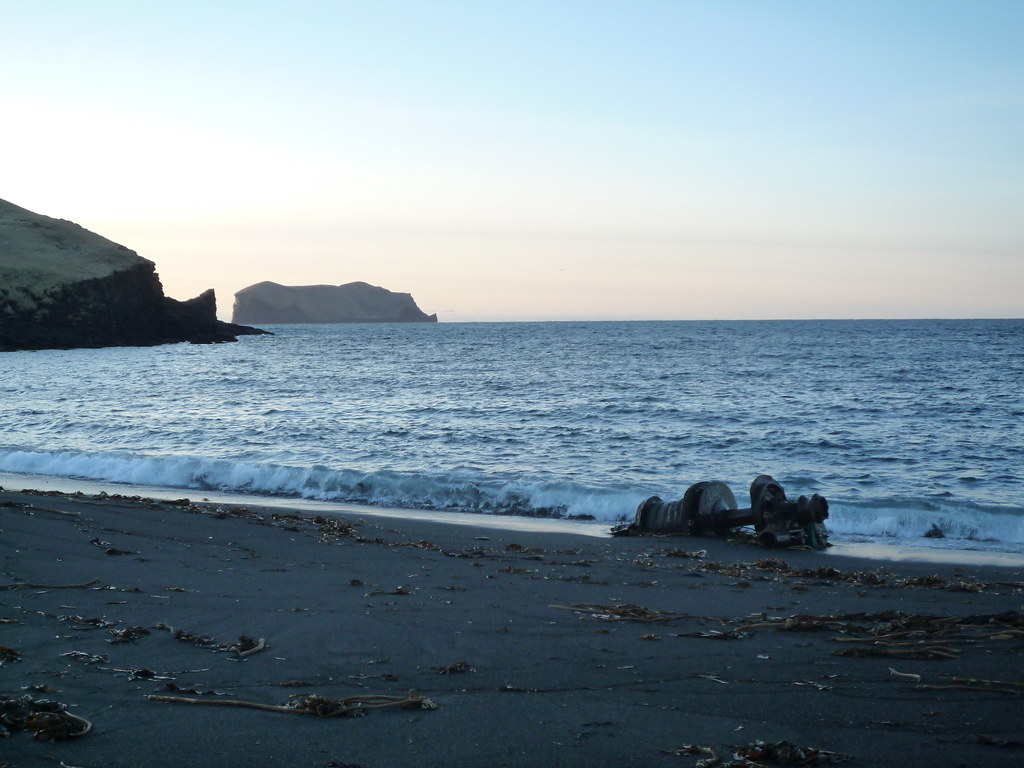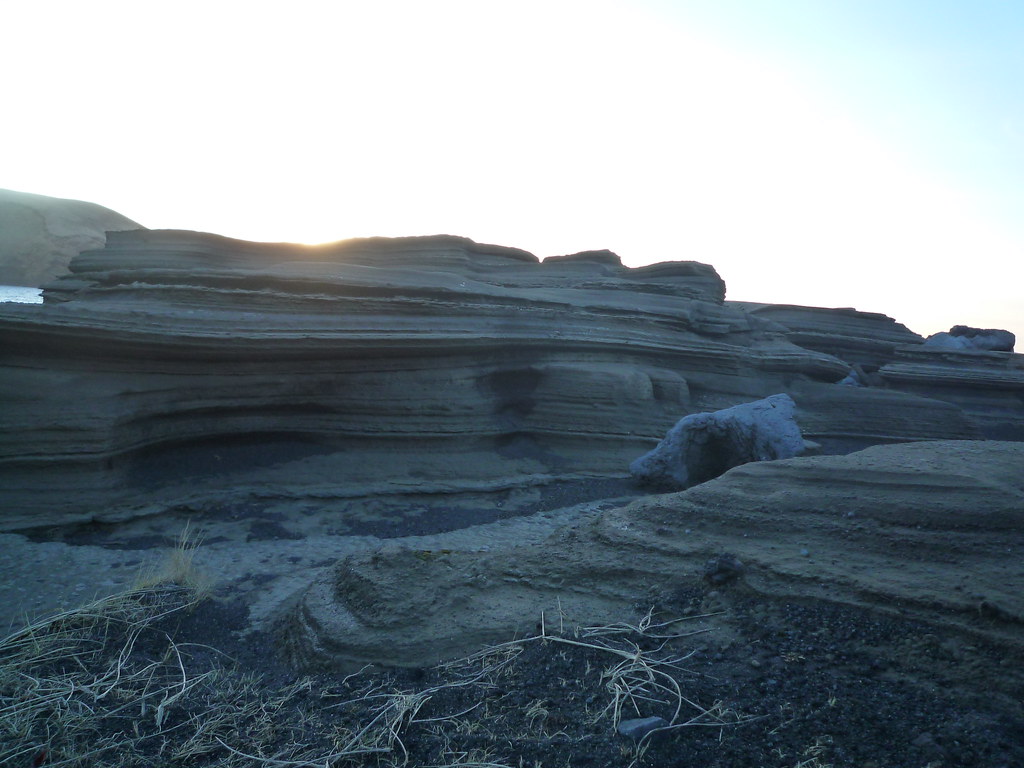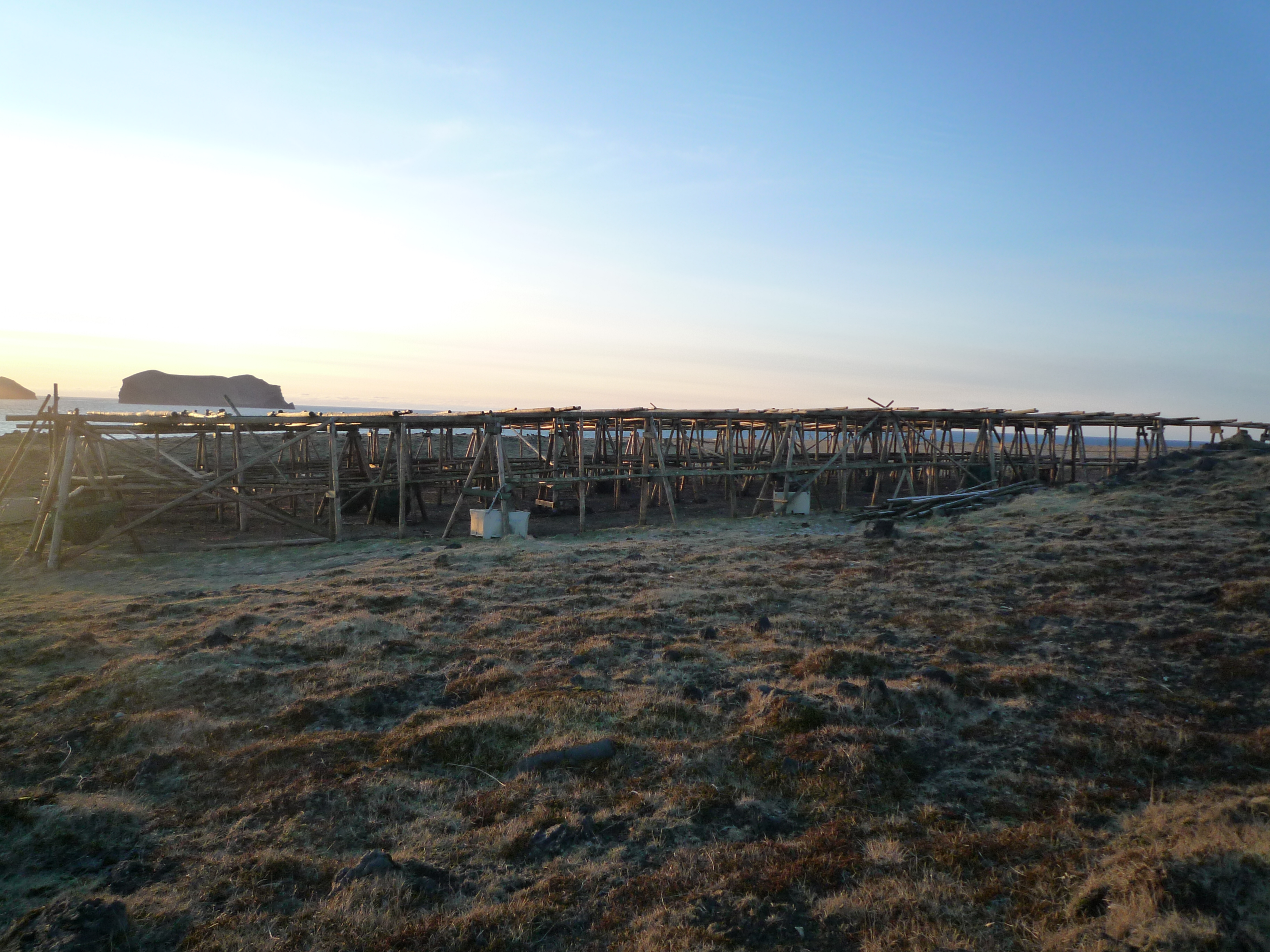I decided to walk the entire perimeter of the island on my second day. I began by passing the house graveyard again and continuing on around the East coast where the ground is considerably younger than my parents. About a square mile of land was added by the '73 eruption, and it is just beginning to be developed. As I looked at new construction to one side of me and the impressively eroded cliffs of the islands on the other, I was amused by the length of my noonday shadow:
I cut inland and scrambled up hillsides and across fields of beautiful moss (and frost) covered lava formations to reach Eldfell, the volcano that caused all the trouble for the islanders.
Eldfell was was actually still hot. Lonely Planet talked about the locals still using it to bake bread, though I saw no evidence of such. I did, however, see steam coming from a vent in the crater and many spots where the frost had melted from the heat emanating from below.
The rocks near the mountain still look like they are flaming:
None of this, of course, kept me from walking in the crater or along the ridge of the side of the cone that didn't collapse. I ascended along the line between the frost covered interior of the mountain and the sunlit slope.
The top gave a wonderful view of the whole island as well as other islands and the glaciated mountains across the water. I could clearly see the new land, the town, and Helgafell, the island's original volcano.
I descended alongside some wonderfully weathered fences down to where grass had been planted to keep the new land from eroding too badly. At about that point I realize I shouldn't be walking there because I was contributing to erosion myself. When I had the chance to look back the line between the grass and the top of the cindercone is striking. I remember thinking to myself "oh, I get it: the fence is to keep the grass out," and then laughing to myself. Traveling alone makes one slightly mad...
At the volcano's base, I saw a pile of bread laying on the frosty grass, and I had seen a similar pile in the house graveyard the day before. It would be perfectly reasonable to assume that it was left there because someone accidentally dropped it or happened to be standing there when they noticed it was stale. However, I prefer to believe that it was an offering, perhaps to the
huldufólk -- hidden people or elves -- that are a part of Icelandic folklore. The average Icelandic person now typically doesn't believe in the hidden folk, but isn't willing to say that they don't exist either. The locals I talked to thought it was probably a coincidence, and they are probably right, though that isn't as fun. In any case, I moved on along the visible ridge of where the island split open From Eldfell on South. On the way I saw a bathtub with quite the story behind it. A fishing vessel sank off the island's coast, and one of the crew managed to swim the six kilometers to shore, where, exhausted and thirsty, he found this tub left to collect water for sheep, broke the ice on its surface, drank, and thereby regained enough strength to keep walking across lava fields to the nearest house. For the full story check out the
pictures (in case there just weren't enough in this post already).
I wandered by some sheep ranches, and actually had to cut through a couple to go around the airport, which takes up a fairly big percentage of the tiny island. The runways are a little too close to the plumeting cliffs for my taste, but then again I was the one walking between the runway and said cliffs, so who am I to complain about safety?
The walk across the narrow Southern part of Heimaey was windy, which in combination with the presence of steep cliffs made for an interesting jaunt. I took a quick stop at Pirate Cove, where Algerian pirates landed and conquered the island, taking many prisoners back with them as slaves. The stone fort at the entrance to the bay was made to repel these same pirates, but the pirates captured some fishermen whose information let them avoid the defended area and land at this unprotected point. The land rose back up to steep cliffs again for the Southermost tip, where I went to get some pictures of Surtsey and other small Vestmannaeyjar islands.
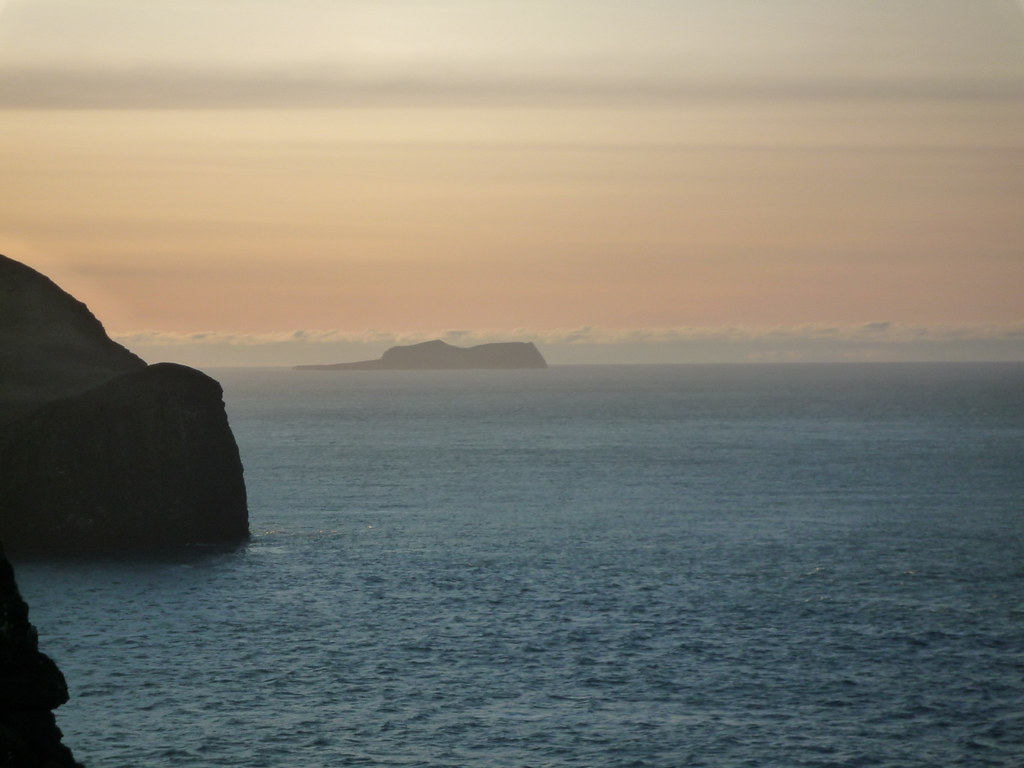
I tread along sheep paths that were a bit too steep for my liking, especially with the strong winds, before heading back North. I found myself keeping pace just ahead of a man with a large camera who stopped to take (much better) pictures in pretty much the same places that I did. We walked by beaches, basalt columns, weirdly eroded volcanic rock, and nets full of rocks that had inexplicably been hung up on a wooden structure.
I stopped at one point, confused as to where the trail went next, and the man caught up with me and was kind enough to be my guide for the rest of my walk. The 60 year old had witnessed both the eruption of Surtsey and Eldfell and told me stories of hunting puffins on the islands we had just photographed. He also takes his photography pretty seriously and advised me of good angles to take, so I can thank him for this shot of Icelandic fuzzy horses:
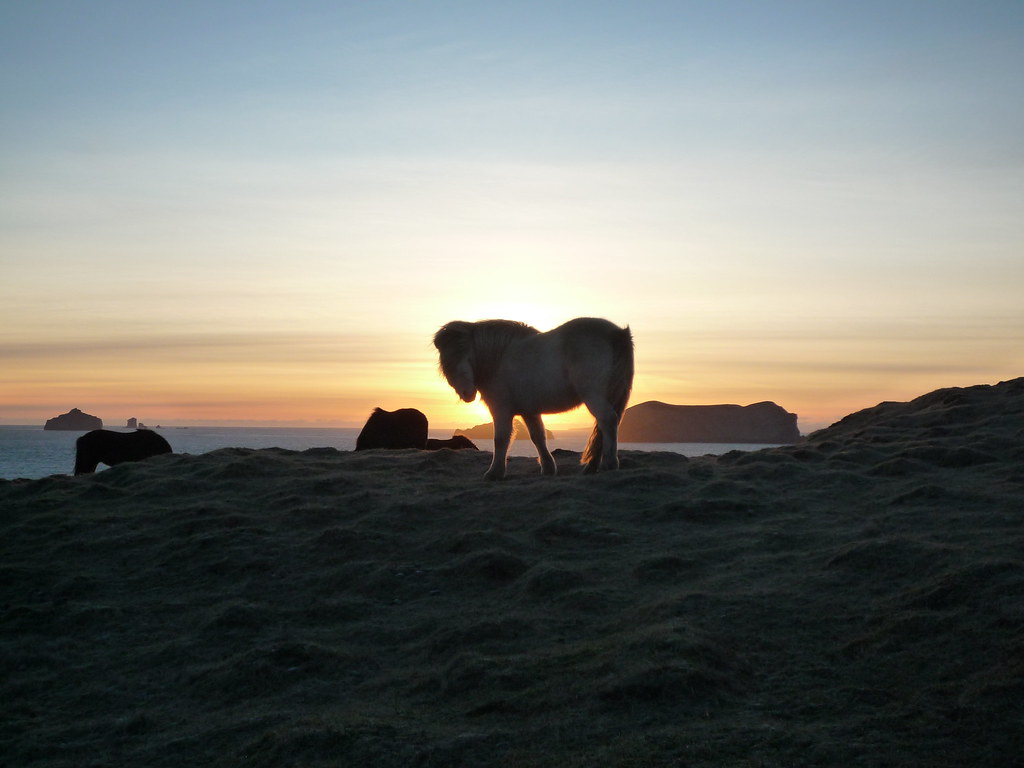
He took me to his home, where I met his wife and young son. They were all incredibly generous hosts. His wife gave me hot chocolate and cookies w/ black licorice inside, while he showed pictures of the island. He had some wonderful shots from the cliffs above of the yearly festival that takes place on the island, which is supposed to get pretty wild with sex, inebriation, and rock and roll. It is apparently a rite of passage for Icelandic teens and temporarily doubles Haimaey's population. If I ever get back to Iceland in summer (which I'd love to do) I'll be sure to attend. As I left, he gave me his hat with an Icelandic logo on it as a keepsake, which I found rather touching. He offered to drive me back to the hostel, which I accepted mostly because I wanted to talk a little more (it's not exactly a long walk across town). In his car he had a stuffed puffin head as a rear mirror decoration.
After we parted I had a succulent meal of monkfish and prawns in garlic butter. Monkfish may be horribly ugly, but they are as melt-in-your-mouth delicious as any lobster.


